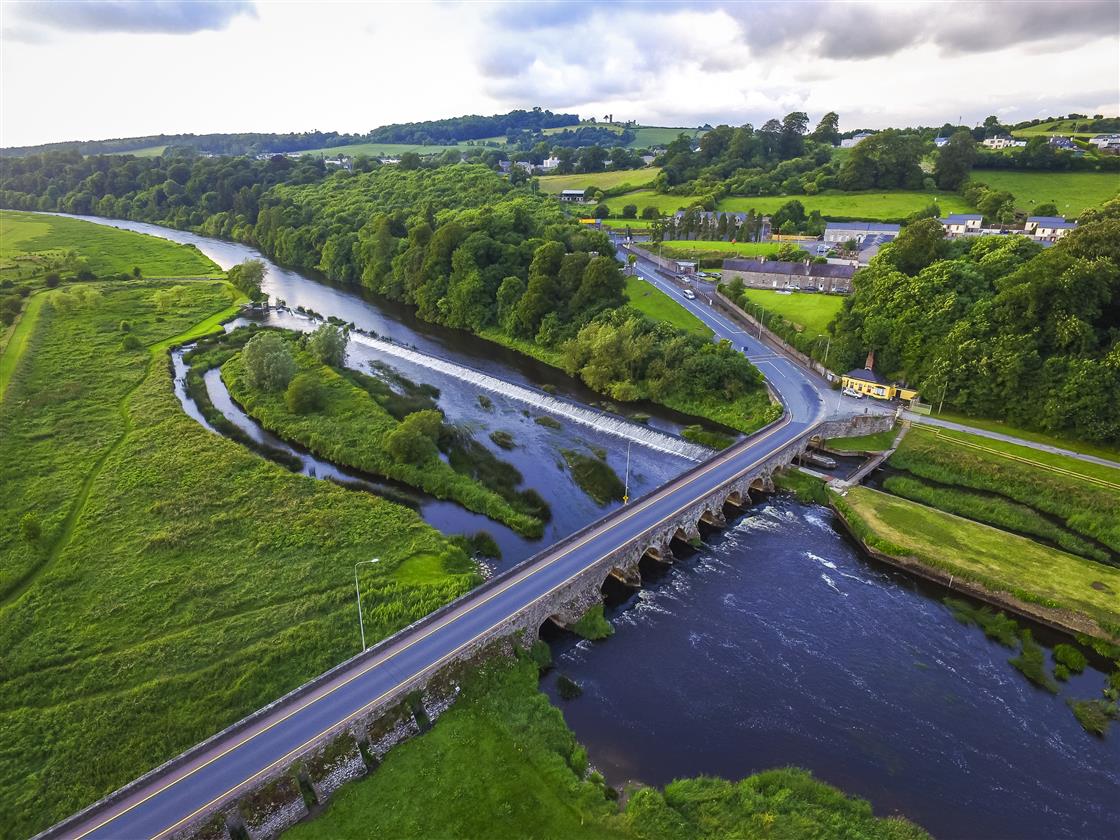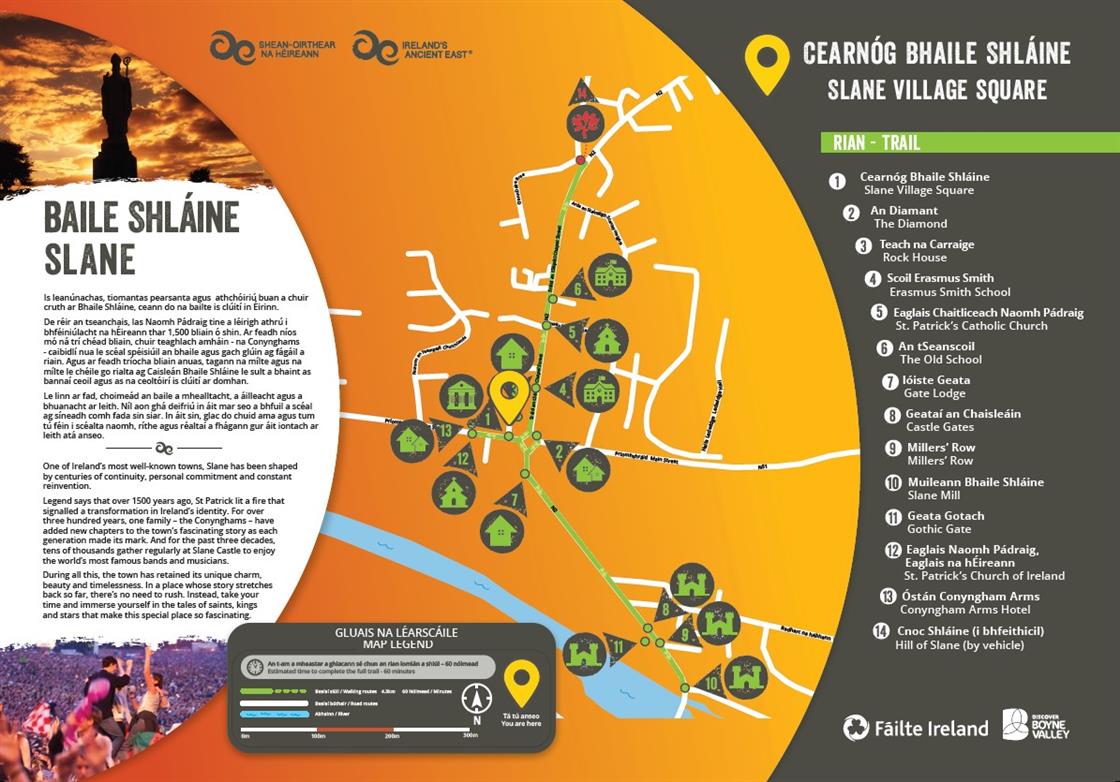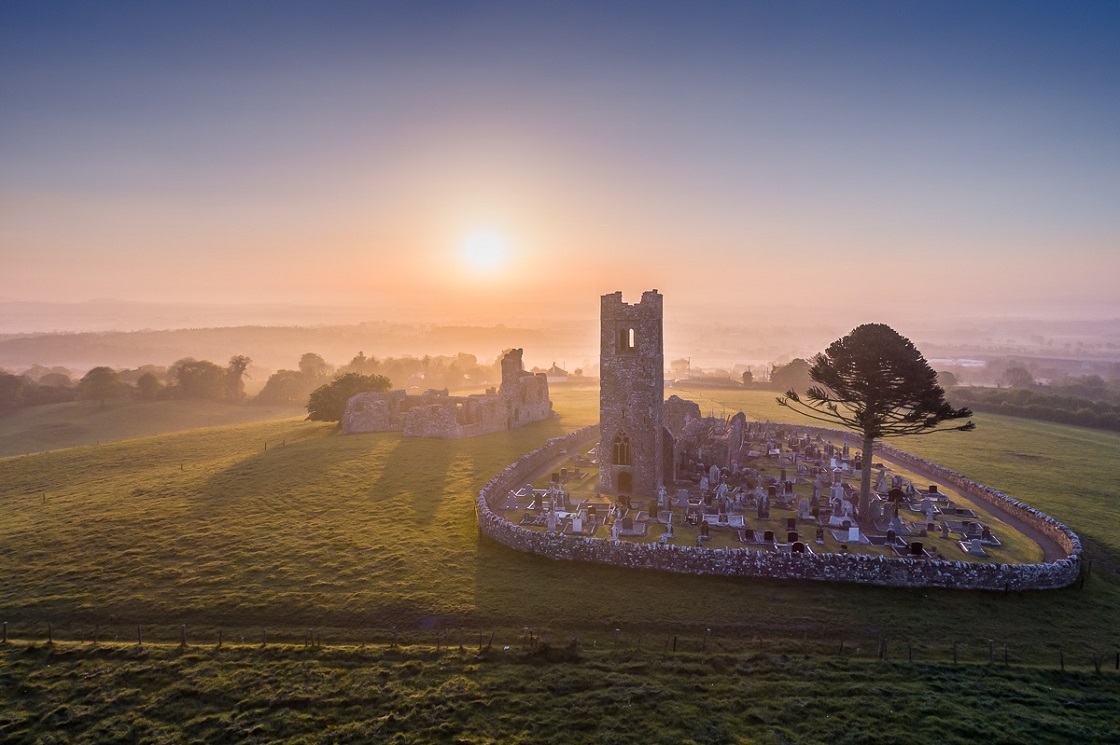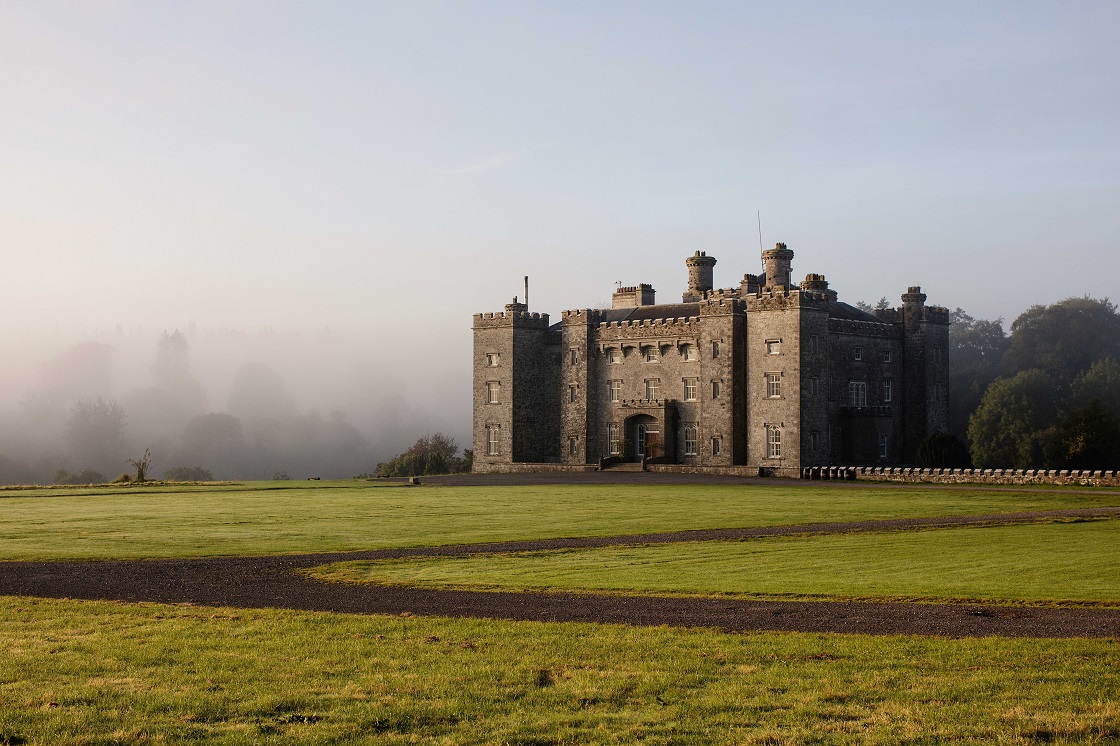Slane Castle
The building as it stands today dates from 1785 and James Wyatt, James Gandon and Francis Johnston were all commissioned by William Conyngham to assist in the design. The estate was purchased by the Conyngham family in 1701 after the lands were forfeited by the previous owners, the Fleming family in 1641, and it remains in the Conyngham family to the present day.
In 1984 U2 lived in Slane Castle while recording ‘The Unforgettable Fire’. Ironically, in 1991 much of the castle was severely damaged by fire, but it has been restored to its former glory by Lord Henry Mount Charles.
St. Patrick
It was on the Hill of Slane, according to ancient manuscripts, that Saint Patrick lit the Paschal Fire on Easter Eve in AD 433. St. Patrick’s fire challenged the Pagan law that forbade the lighting of any other fire while the festive fire at Tara still burned. King Laoghaire was alarmed to see a fire lit on a prominent hill within sight of Tara and said that Patrick was not to be honoured in any way.
St. Erc
Erc was the only member of King Laoghaire's retinue to break ranks and pay homage to Patrick. Patrick baptised Erc and later consecrated him first Bishop of Slane. Tradition ascribes the foundation of the original monastery on the Hill of Slane to Saint Erc. In the graveyard lie two stones, the remains of a tomb of great antiquity known as Erc’s Tomb. Saint Erc’s foundation thrived in Slane and had an honourable history for at least six hundred years.
Dagobert
Legend has it that Slane Monastery was a place of sanctity and scholarship during the quieter centuries before the arrival of the Vikings and Normans. In 653, the King of Austrasia (a kingdom in eastern Gaul) died aged 21 years leaving his two year old son Dagobert as heir. His chief ministers assumed control over the affairs of state and young Dagobert was sent to Slane Monastery to be educated. After twenty years Prince Dagobert returned home to become king.
The ruins on the hill today consist of a Franciscan Church and College. They were erected by Christopher Fleming in 1512, the Fleming Family were Lords of Slane for over 500 years.
Slane Mill
The flour mill and mill-house at Slane are two of the finest examples of industrial architecture in Ireland, completed by 1766. The mill was initiated through a business transaction between William Conyngham of Slane Castle, Blayney Balfour of Townley Hall and David Jebb, an engineer for the Boyne Navigation Company.
The local farmers supplied the mill with corn and once the wheat had been milled, the flour could be transported via the Boyne Navigation to Drogheda and further on to home or foreign ports. From 1880 the mill was used as a coal depot. Towards the end of the first World War, flax scutching machinery was installed by Messers. Leitch, an Ulster firm. In the 1930s flour bag cloth was produced. The new weaving factory was opened in 1954. In 1959 a spinning mill was added. Weaving ceased in 1978, spinning in 1982 and the mill finally closed in 1983.
The Millhouse
In the early 20th century, the millhouse ceased to be used as accommodation for the managers and operated as the Boyneville Hotel, catering for tourists who enjoyed the pleasure trips operating along the canal which ran from Oldbridge to Navan from 1905 – 1914. Since 1980 it has been owned by The Quigley family from Dundalk who developed the Millhouse Hotel in 2006.




